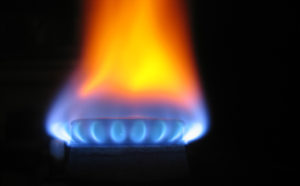 Natural gas capped a third consecutive weekly decline as mild weather across most of the US throughout October paved the way for additional above-average inventory builds that would further narrow a record deficit.
Natural gas capped a third consecutive weekly decline as mild weather across most of the US throughout October paved the way for additional above-average inventory builds that would further narrow a record deficit.
Natural gas futures for delivery in November rose 0.03% on Friday to $3.623 on the New York Mercantile Exchange, settling the week 3.8% lower. Prices shifted between Fridays 11-month low of $3.559 and a weekly high at $3.745 touched on Monday. Prices fell around 10.5% in the past three weeks.
The energy source received a brief boost on Thursday after the EIA reported that US natural gas stockpiles rose by 94 billion cubic feet (bcf) during the week ended October 17th, compared to analysts’ projections for a jump in the range of 95-98 bcf. This was the 27th consecutive above-average weekly build.
The power-station fuel erased losses and jumped into positive daily territory after the release of the report. However, since the build was only an inch below expectations, the gain was unsustainable and the contract fell 1% through the close.
Total gas held in US storage amounted to 3.393 trillion cubic feet as of last week, narrowing the gap to the five-year average of 3.731 trillion to 9.1%. Year-on-year, gas levels were 9.0% lower.
The East region received a net injection of 47 billion cubic feet and stood at 1.872 trillion, 7.1% below the five-year average, while stockpiles in the West region rose by 8 bcf to 482 billion, trailing the five-year average by 6.9%. The Producing region saw a build of 39 billion cubic feet to 1.039 trillion and was 13.4% below the average.
The Energy Information Administration said in its Short-Term Energy Outlook dated October 7th that inventories may rise to 3.532 trillion cubic feet by the end of the month, the lowest for this time of the year in six years. Marketed gas production is expected to jump 5.4% this year to 73.98 bcf per day, the biggest percentage increase and also volume since 2011.
Gene McGillian, an analyst and broker at Tradition Energy in Stamford, Connecticut, said for Bloomberg: “The lack of seasonal demand and the amount of gas we’re putting in the ground continue to depress the market. We could even see another triple-digit storage injection before the winter.”
US weather
NatGasWeather.com reported on October 24th that natural gas demand through the end of October will remain low-moderate, compared to normal, with a neutral weather trend for the first week of November.
The Northeast will see scattered showers and wind gusts today, with highs in the upper 40s and 50s for most of the region, while the Mid-Atlantic will reach the 60s.
Readings over the central and southern US are expected to be mild during the weekend and early next week, with highs into the 60s and 70s, and 80s for the South, before additional weather systems arrive. This will drive modest late season cooling demand. Pacific storms across the Northwest will carry rains and slightly cooler-than-normal readings.
Late next week, a weather system tracking across the north-central US will push readings below average. A much colder Canadian weather system will follow between November 1st-3rd across the Midwest and Northeast, inducing modest heating demand. However, the uncertainty surrounding those active weather systems and forecasting agencies’ inability to clearly predict how much cold Canadian air will be tapped kept the market pressured at 11-month low levels.
“Without follow through from colder weather patterns after November 4th, the markets will get to remain impatient a bit longer waiting on something more intimidating to show up,” NatGasWeather.com analysts said in an e-mailed note. “Again, late next weeks cold could support prices for a few days as it gets some hype, especially if the potential for light snowfall increases, but the overall big picture says it wont be cold enough, long enough, to be threatening enough.”
The central and southern parts of the country will remain mild, curbing heating and cooling demand. The western US will be affected by Pacific weather systems.
Temperatures
According to AccuWeather.com, readings in New York on October 28th will range between 61-70 degrees Fahrenheit, above the average of 46-60, before they drop to 42-51 on November 2nd. The low in Chicago on October 29th will be 43 degrees, 1 above average, before falling to 30 degrees on November 4th, 10 below usual.
Down South, temperatures in Houston will max out at 86 degrees on October 28th, 8 above normal, and are expected to drop to 74 degrees on November 1st, 3 below seasonal. On the West Coast, Los Angeles will reach 81 degrees on Tuesday, compared to the average of 77, before easing to the seasonal 76-77 between October 31st and November 2nd.
Pivot points
According to Binary Tribune’s daily analysis for Monday, November natural gas futures’ central pivot point stands at $3.612. In case the contract penetrates the first resistance level at $3.665 per million British thermal units, it will encounter next resistance at $3.707. If breached, upside movement may attempt to advance to $3.760 per mBtu.
If the energy source drops below its first support level at $3.570 per mBtu, it will next see support at $3.517. If the second key support zone is breached, the power-station fuel’s downward movement may extend to $3.475 per mBtu.
In weekly terms, the central pivot point is at $3.642. The three key resistance levels are as follows: R1 – $3.726, R2 – $3.828, R3 – $3.912. The three key support levels are: S1 – $3.540, S2 – $3.456, S3 – $3.354.





